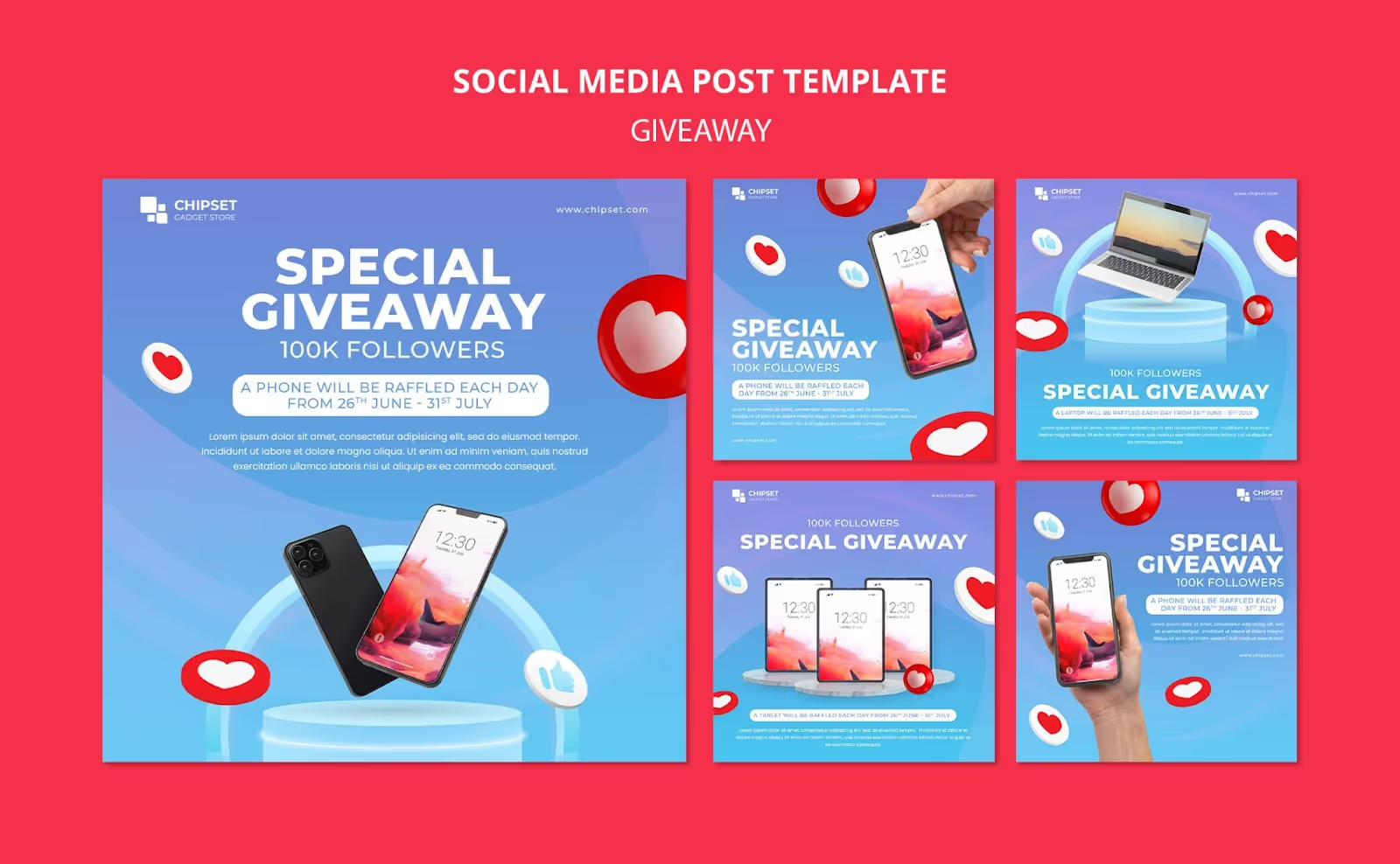Imagine putting significant effort, time, and resources into creating an outstanding product. You've meticulously designed it, perfected its features, and made sure it offers real value to potential users.
However, without a strategic plan to present it to the world, even the best products can go unnoticed. This highlights the importance of knowing how to launch a product effectively.
In this article, you will learn all about the best tips and practices to successfully launch a product. Keep on reading.
The Importance of a Product Launch
A well-planned launch is important because it can significantly influence the success and longevity of your product in the market.
Here are some reasons why you should consider having one:
Generate awareness and excitement
The launch is your first opportunity to make an impression on potential customers.
By having a well-planned launch, people become curious and eager to learn more about your product and buy it. Moreover, clearly communicating how your product solves specific problems or meets particular needs can help you attract customers who are actively seeking solutions.
Awareness can also lead to customer engagement. Engaged customers are more likely to consider your product, compare it with competitors, and ultimately make a purchase.
Drive sales
Launches often create a sense of urgency, especially with limited-time offers, exclusive deals, or pre-order opportunities.
You can take this opportunity to drive immediate sales and capitalize on the heightened interest brought by the launch.
Consider launching a product during special occasions or major events so you can maximize sales opportunities. For example, launching a new tech gadget before the holiday season can drive significant sales.
A successful launch sets the foundation for long-term sales growth. The momentum generated can lead to sustained interest and ongoing sales.
Competitive Advantage
A well-promoted launch generates interest and excitement, attracting new customers and capturing a significant portion of the market early on. Early adopters often become brand advocates, driving word-of-mouth marketing and further solidifying your market position.
A strong launch can secure early customer commitment and loyalty, making it harder for competitors to lure them away.
Moreover, a launch allows you to clearly communicate your product’s unique features and benefits, which helps you stand out from competitors.
How to Launch a Product
Knowing how to launch a product online or offline is the first step to improving awareness, driving sales, and gaining a competitive advantage.
Here are tips and best practices for launching a product:
Pre-Launch Preparation
Your pre-launch preparation sets the foundation for a smooth, effective, and impactful introduction of your product to the market.
Understand your market and set clear goals
You can understand your market by identifying your target audience (demographics, psychographics, behavior) and analyzing your competitors.
Identify competitors that offer similar products or solutions. Understand their strengths, weaknesses, pricing strategies, and market positioning.

Next are your SMART Goals. Set Specific, Measurable, Achievable, Relevant, and Time-bound goals for your pre-launch activities. For example, aim to achieve a certain number of email sign-ups, generate a specific amount of buzz on social media, or secure a certain percentage of media coverage.
Create a launch plan and timeline
A product launch plan is a strategic roadmap that outlines the steps and actions needed to successfully introduce a new product to the market. This includes the following:
A. Pre Launch Phase
a. Timeline (Product development completion, packaging design, marketing collateral creation, website preparation, market research, content marketing planning, PR and media outreach planning)
b. Pre-launch activities (Teaser campaigns and media outreach)
c. Media and PR Strategy
B. Launch Day Activities
a. Event planning
b. Marketing (Social media activation, email campaigns, and paid advertising)
C. Post - Launch Phase
a. Performance Monitoring
b. Customer follow-up
c. Improvements implementation
Build Anticipation
Anticipation piques curiosity among potential customers. This prompts them to learn more about the product and its features. It also encourages interaction through likes, shares, comments, and sign-ups for newsletters or early access.
This is important if you want to learn how to launch a product online.
Create teaser campaigns
Teaser campaigns are essential in building anticipation and excitement around a product launch. You can do this through the following:
- Social media teasers: These are short, engaging content pieces designed to create anticipation and generate interest in an upcoming product, event, or announcement. Examples are countdown posts, teaser images, interactive polls, behind-the-scenes content, and teaser campaign hashtags.
- Email marketing campaigns: Announce the upcoming product launch to your email subscribers to create excitement and anticipation. You can also send out pre-launch offers, educate them about product features and benefits, and maintain engagement after the launch.
- Website teasers: Create a dedicated landing page on your website that teases the product’s benefits, features, and launch details, prompting visitors to sign up for notifications or updates.
- Teaser events or webinars: Host virtual events or webinars where you provide exclusive previews of the product, answer questions, and engage directly with potential customers.
Consider collaborating with influencers
Influencers have dedicated follower bases that align closely with your target demographic. Collaborating with them allows you to reach new audiences who may be interested in your product.
Influencers are perceived as authentic voices within their communities. Their endorsement of your product lends credibility and authenticity, enhancing trust among their followers.
Moreover, influencers excel at creating compelling and engaging content that resonates with their audience. They can showcase your product through various formats like reviews, tutorials, or experiential posts.
🤓Read the case study: Getting 69,300 Leads in 2 Weeks Through The Power Of Collaboration
Use Giveaways to Generate Buzz
Use giveaways as part of your pre-launch teaser strategy to build anticipation and excitement among your audience. Announce the giveaway as part of your product launch announcement to capture immediate attention and encourage early engagement.
Plan the giveaway
Select a prize that aligns with your brand and target audience’s interests. It could be your own product, a popular item related to your industry, or a gift card for your brand.
Next, define how participants can enter the giveaway (e.g., follow your social media accounts, like/comment on a post, subscribe to your email list, share the post, tag friends). Determine the start and end dates of the giveaway. Consider running it for a sufficient period to maximize participation without losing momentum.
Then, outline how winners will be chosen (e.g., random draw or choosing based on the number of referrals). Clearly state when and how winners will be announced. This ensures that participants thoroughly understand the mechanics of the giveaway!
📖Learn more: How to Pick a Giveaway Winner (And Keep Everyone Happy)
Promote the giveaway across social platforms
Social media platforms have extensive user bases, allowing you to reach a large and diverse audience. Promoting your giveaway across multiple platforms increases the likelihood of reaching potential participants who may not follow you on other channels.
Select social media platforms where your target audience is most active (e.g., Instagram, Facebook, Twitter, LinkedIn, TikTok).

Create a visually appealing and informative announcement post for your giveaway. Include key details such as the prize, entry requirements, duration, and how to enter.
Consider using paid advertising to amplify your giveaway’s reach. Platforms like Facebook and Instagram allow you to target specific demographics and interests, and maximize visibility among potential participants.
Leveraging UpViral for Buzz-Worthy Campaigns + Case Studies
UpViral is a viral marketing platform designed to help businesses create and run viral giveaways, contests, sweepstakes, and referral campaigns. You can use the platform to create engaging pre-launch campaigns that capture email addresses and build a list of interested prospects before the official launch.
Encourage participants to share your campaign with their network by offering rewards such as discounts, freebies, or early access to the product. This helps spread the word organically and reach a larger audience.
If you want ideas on how to launch a product, here are examples using a giveaway:
G4 Educaçao's $1.5 Million Dollar Product Launch
Gabriel and G4 Educaçao implemented a milestone campaign with a contest. Using an UpViral widget on their website, they collected leads' names, emails, and phone numbers for outreach purposes.
Participants who opted in for a free digital entrepreneur course were directed to a share page where they could earn rewards by referring friends. Prizes included ebooks and leadership resources, with top referrers competing for a grand prize—a day of in-person training at G4's offices, aimed at sustaining high engagement throughout the campaign.
G4 not only achieved but exceeded their target of 50,000 new leads, generating nearly 60,000 fresh leads through their UpViral campaign.
Legion Beats' $200K Product Launch
Gabe used UpViral to run a contest aimed at building an audience ahead of a Black Friday product launch, maximizing anticipation and sales. The contest ran for 4-8 weeks, leveraging the extended duration to amplify word-of-mouth.

For the grand prize, Gabe offered a comprehensive package including studio time, music video production, promotional budget, and a vast collection of beats, valued to attract and engage his target audience effectively.
The campaign generated a total of 41,985 leads and achieved $200,000 in sales within just one week, despite selling a product priced at $17. Additionally, the campaign garnered 207,667 visits and facilitated 10,321 shares on Facebook!
Post-Launch Strategies
Post-launch strategies are crucial for sustaining momentum and maximizing the success of a product launch. After the initial excitement of the launch phase, maintaining engagement with your audience is key.
Keep your audience informed and engaged through regular updates via email newsletters, social media posts, and blog articles.
Actively seek feedback from customers through surveys, reviews, and direct communication channels. Analyze this feedback to understand customer satisfaction levels, identify areas for improvement, and gather insights into product performance and customer expectations.
Conclusion
A well-executed launch can attract attention from potential customers and set the stage for sustained growth and customer acquisition. Having a product launch strategy ensures that your product gains maximum visibility in the market, so you can drive sales and gain a competitive advantage.
If you’re interested in running a giveaway using UpViral, you can click here to learn more!





.png)